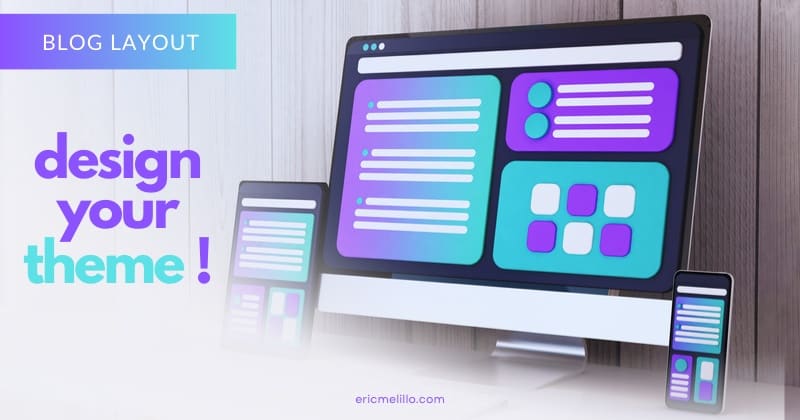Starting a blog on Squarespace? You’re in the right place. Squarespace is a fantastic blog platform known for its simplicity and design capabilities. Whether you aim to share stories and insights or set up an online store, Squarespace offers the tools to make it happen. And guess what? Thanks to its integration with Google Domains, managing your domain and hosting is a breeze.
Having been in the digital marketing and blogging arena for years, I’ve seen the transformative power of a well-crafted blog. Squarespace stands out with its array of customizable templates and features. The added bonus? Their educational resources and support forums never leave you in the dark.
Ready to kick things off? Once you’ve set up your blog, remember to share your content on social platforms like Facebook and Twitter. It’s a surefire way to draw readers in. And if you’re thinking of hosting webinars, capturing emails is a game-changer. Let’s get your voice out there with Squarespace!
Choosing the Perfect Template for Your Squarespace Blog

The right Squarespace template can elevate your blog’s appearance and functionality, directly influencing reader engagement. I’ll help you navigate the choices and select a template that aligns perfectly with your content and goals.
Factors to consider when selecting a template for your blog
One of the first decisions you’ll need to make when starting a blogging website is choosing the perfect template for your blog post title. The right template can set the tone for your blog and create an engaging experience for your readers. Here are some factors to consider when selecting a template for your Squarespace blog to publish on your website.
- Design: The design of your blog template plays a crucial role in attracting and retaining readers. Consider each template’s overall aesthetics, layout, and typography options. Consider whether you prefer a minimalist look or something more vibrant and eye-catching.
- Customizability: Choosing a template that allows you to customize various elements according to your preferences is essential. Look for flexible templates regarding colors, fonts, and page layouts. This way, you can create a unique and personalized blog that reflects your brand.
- Responsiveness: With an increasing number of people accessing websites through mobile devices, ensuring that your chosen template is responsive is crucial. A responsive design will automatically adjust its layout based on the screen size, providing an optimal viewing experience across different devices.
- Functionality: Consider the specific features and functionalities you require for your blog. Do you need e-commerce integration? Are you planning to incorporate forms or galleries? Ensure the chosen template supports all the necessary plugins or extensions to achieve these functionalities.
- Loading Speed: Page loading speed is vital for user experience and search engine optimization (SEO). Choose a template optimized for fast loading times so visitors don’t have to wait too long before accessing your content.
Exploring different template options available on Squarespace
Squarespace offers an extensive range of templates designed specifically for blogging. Each site template has its unique style, layout, and features. Here are some popular template options you can explore on Squarespace’s blogging panel.
- Brine: Brine is a versatile template family that offers multiple variations to suit different blog niches. It provides a wide range of customization options and is known for its flexibility in design.
- Pacific: Pacific is a clean and modern template suitable for bloggers who prefer a minimalist look. It offers a simple yet elegant layout focusing on typography and white space.
- Farro: If you’re looking for a visually stunning template, Farro might be the perfect choice. It showcases your blog posts using captivating thumbnail images and provides an immersive reading experience.
- Wexley: Wexley is an excellent option for bloggers who want to highlight their visual content. With its gallery-style layout and full-width images, it’s ideal for photographers, artists, or anyone who wants to showcase their work prominently.
How to choose a template that aligns with your blog’s niche and style
Selecting the right template for your blog’s site is crucial. It helps create a cohesive brand identity. Here are some steps to help you choose the perfect template. Click on the settings to access the options and customize your post accordingly.
- Identify your niche: Determine the main topic or theme of your blog. Are you writing about fashion, food, travel, or something else? Understanding your niche will help you narrow down the templates that best cater to your specific subject matter.
Step-by-Step Guide: Creating Your Squarespace Blog
Launching a Squarespace blog is a pivotal step to sharing your voice online, and doing it right ensures a smooth experience for your readers. I’ll break down the process, making setting up an attractive and functional blog easy.
Registering an account and choosing a domain name for your blog
To start a blog on Squarespace, follow these steps: 1. Register an account by clicking the “Get Started” button on the Squarespace website. 2. Provide your email address, create a password, and choose a unique username for your account. 3. Complete the registration process to gain access to the Squarespace dashboard. This post will help you with the settings and ID.
Now that you have an account, it’s time to choose a domain name for your blog. A domain name is the web address where people can click and find your blog online. Think of something catchy and relevant to your content. You can use keywords related to your niche or go with something more creative. Squarespace provides options for purchasing a new domain directly through their platform or connecting an existing one in the settings.
Setting up your basic site structure and layout in Squarespace
Once you’ve registered an account and chosen a domain name, it’s time to set up your blog’s basic structure and layout on Squarespace. Start by selecting a template that suits your style and needs from the available options in the template library. These settings will help us post and provide the necessary help.
After selecting a template, you’ll be directed to the site editor, where you can customize various elements of your blog’s design. Use drag-and-drop functionality in the settings to add sections, blocks, and pages to create the desired layout. Experiment with different fonts, colors, and images until you’re satisfied with how everything looks. This will help you create a post that stands out and attracts more readers.
Remember that simplicity is key when it comes to your blog layout. Ensure your main blog page has an easy-to-navigate navigation menu so visitors can find what they’re looking for without any hassle. Additionally, don’t forget to optimize your blog title and customize your blog settings to enhance the user experience.
Adding essential pages like About, Contact, and Privacy Policy
Adding essential pages such as About, Contact, Privacy Policy, and Settings is important to make your blog complete and professional-looking. These pages will help us provide our readers with the necessary information and assistance.
The About page is where you can introduce yourself to us and your readers and give them a glimpse into who you are and what your blog is all about. Share your story, your passions, and why you started the blog. This post helps build a connection with your audience and allows you to customize the settings.
The Contact page in your blog layout should include an email address or a contact form to help visitors contact you. This will enable people to reach out with questions, feedback, or collaboration opportunities. Make sure to configure the blog settings accordingly to ensure that the contact information is easily accessible.
Lastly, don’t forget to check your privacy settings on the blog post. This will help ensure that your personal information is collected, used, and protected following privacy regulations. The Privacy Policy page is essential for building trust and complying with privacy regulations.
Customizing Your Squarespace Blog Design
So you’ve set up your blog on Squarespace, and now it’s time to make it truly your own. From personalizing the appearance to tweaking fonts, colors, backgrounds, and settings, we’ll explore all the options available to help you create a blog post that perfectly reflects your brand identity. Join us as we delve into the different ways you can customize your blog to make it unique to you.
Personalizing Your Blog’s Appearance
One of the great things about Squarespace is its intuitive design settings that allow you to customize the look and feel of your blog easily. To get started, navigate to the Design panel in your Squarespace website dashboard. Here, you’ll find a range of options to play around with.
Custom Logo and Branding
First impressions matter, so let’s start by adding a custom logo to your blog. Uploading a logo that represents your brand will give your blog a professional touch and make it instantly recognizable. Simply click on Logo & Title in the Design panel and follow the prompts to upload and position your logo.
But branding doesn’t stop at logos! You can also customize other elements in your blog settings, like colors and fonts, to match your brand identity. Experiment with different combinations until you find a style that resonates with you in your blog post.
Backgrounds That Stand Out
Another way to personalize your Squarespace blog is by choosing eye-catching background settings. Whether it’s an image or a solid color, selecting something that aligns with your content and aesthetic can greatly enhance the overall look of your site. Post the settings that suit you best, and let us help you create a visually stunning blog.
Squarespace offers various options for background customization on the main blog page. You can opt for full-screen images or choose from their library of stunning stock photos in the settings. Alternatively, if minimalism aligns with your style, consider using solid colors or gradients as backgrounds in your blog post.
Enhancing Your Design With CSS Customization
Squarespace allows you to utilize custom CSS in the settings if you want even more control over your blog’s design. This opens up a world of possibilities for fine-tuning the appearance and layout of your blog post.
Customizing Fonts and Styles
With CSS customization, you can go beyond the default font options provided by Squarespace and use any font you desire in your blog post. Whether it’s a bold serif or a playful script, the choice is yours. By injecting custom CSS code into your site, you can make your blog post unique and aligned with your brand’s personality.
CSS customization in a blog post allows for granular control over style elements like headings, paragraphs, links, etc. You can adjust sizes, colors, spacing, and other attributes to create a cohesive look throughout your post.
Styling Individual Blog Posts
Each blog post deserves its own spotlight. With Squarespace’s CSS customization options, you can style individual posts differently to make them stand out prominently. For example, you might want to highlight important announcements or featured articles using distinct colors or background images.
By targeting specific elements within each post using CSS selectors, you can create visually captivating content on your blog page that captures readers’ attention right from the start.
Get Creative with Blocks and Layouts
Squarespace offers a wide range of blocks and layouts on our blog page, allowing you to organize your content uniquely for your blog post.
Setting Up Navigation and Pages for Your Blog
Effective navigation and well-organized pages can boost your blog’s user experience, helping readers stay longer and engage more. I’ll show you how to set this up, ensuring your content is accessible and appealing to your audience.
Organizing your content using navigation menus in Squarespace
One of the key elements you need to focus on in your blog post is organizing your content effectively. This starts with setting up navigation menus allowing visitors to navigate your blog easily.
To get started on your blog post, head over to your Squarespace dashboard and navigate to the “Pages” section. Here, you can create and customize different pages that will be part of your blog’s navigation menu. Think about the main categories or topics you want to cover in your post and create separate pages for each of them.
For example, if you have a food blog, you might want to create pages like “Recipes,” “Restaurant Reviews,” and “Healthy Eating Tips” in your blog post. By doing this, you’ll be able to neatly categorize your content and make it easier for us visitors to find what they’re looking for.
Once you’ve created the necessary pages for your blog post, it’s time to add them to your main blog page. To do this, go back to the “Pages” section and click on the settings icon next to each page. From there, select the option that says “Add Page To Menu” to include them in your blog post.
In this blog post, you can rearrange the order of these pages by dragging and dropping them within the menu editor. This allows us to prioritize certain categories or topics based on their importance or relevance.
Remember that simplicity is key when designing your blog page. Try not to overwhelm visitors with too many options or submenus in your blog post. Keep it clean and organized so users can easily find what they’re looking for without getting lost in a sea of links.
Creating categories or tags to help visitors navigate through your blog posts
In addition to setting up navigation menus, another useful way of organizing your blog content is by creating categories or tags for your posts. This helps visitors navigate through specific topics or themes that interest them.
To create categories or tags for your blog post, go to the “Settings” section in your Squarespace dashboard and click on “Blogging.” Here, you’ll find options to add new categories or tags that align with the topics you cover in your blog.
Let’s say you have a travel blog. You can create categories like “Adventure Travel,” “City Guides,” and “Travel Tips.” When writing a new blog post, you must assign it to the relevant category or tag. Visitors can easily filter through your content based on their interests.
Categories are typically used for broader topics on a blog page, while tags are more specific and can be applied to multiple posts. For example, if you have a post about hiking in the mountains, you could assign it to both the “Adventure Travel” category and the “Hiking” tag on your blog page.
By utilizing categories and tags effectively, you provide a user-friendly experience for your audience. They can quickly find related posts without scrolling through your blog entries. This saves them time and encourages them to explore more of your content.
Adding additional pages like Archives or Resources for better user experience
To enhance the user experience on your blog even further, consider adding additional pages such as Archives or Resources. These pages provide valuable information and make it easier for visitors to navigate through your content. Adding these pages will improve the overall quality of your blog post.
The Archives page is particularly useful when you have many blog posts.
Optimizing Your Squarespace Blog for SEO
Optimizing your Squarespace blog for SEO can significantly increase your online visibility, drawing more readers to your content. I’ll guide you through key strategies to ensure your blog reaches its maximum potential audience.

Importance of SEO for Driving Organic Traffic to Your Blog
You may have the most amazing blog post content out there, but if nobody can find it, what’s the point? That’s where Search Engine Optimization (SEO) comes into play. Understanding the importance of SEO is crucial in driving organic traffic to your Squarespace blog post.
When you optimize your blog post for search engines, you increase its visibility and make it easier for people to discover your content. By implementing effective SEO strategies, you can improve your search rankings and attract more visitors actively searching for topics related to your blog post.
Implementing Best Practices like Optimizing Page Titles, Meta Descriptions, and URLs
To maximize the impact of SEO on your Squarespace blog post, it’s essential to implement best practices for meta descriptions and URLs.
- Page Titles: Your page titles should be concise yet descriptive. Including relevant keywords in your titles can help search engines understand what your blog post is about. For example, instead of a generic title like “My Blog Post,” consider using something more specific like “How to Start a Blog on Squarespace: A Comprehensive Guide.”
- Meta Descriptions: Meta descriptions briefly summarize your blog post that appears in search engine results. Writing compelling meta descriptions is important to entice users to click through and read your content. Incorporate relevant keywords naturally while maintaining readability.
- URLs: When creating URLs for your Squarespace blog posts, aim for short and keyword-rich URLs that accurately reflect the topic of each post. For instance, instead of a lengthy URL like “www.myblog.com/p=12345,” opt for something more optimized such as “www.myblog.com/start-blog-squarespace.”
You increase the chances of attracting organic traffic by optimizing these elements in your Squarespace blog post.
Utilizing Keywords Strategically Throughout Your Content to Improve Search Rankings
Keywords play a vital role in improving your search rankings. By strategically incorporating relevant keywords throughout your content, you can increase the visibility of your Squarespace blog post and attract more targeted traffic to your post.
Here are some tips for utilizing keywords effectively:
- Keyword Research: Conduct thorough keyword research to identify the terms and phrases people commonly use when searching for topics related to your blog. Tools like Google Keyword Planner or SEMrush can assist you in finding valuable keywords with high search volume and low competition.
- Keyword Placement: Once you have identified the target keywords, placing them strategically within your content is crucial. Include them in headings, subheadings, and throughout the body of your blog posts. However, use them naturally and avoid keyword stuffing, which can negatively impact user experience and search engine rankings.
- Long-Tail Keywords: Besides targeting broader keywords, consider incorporating long-tail keywords into your content. Long-tail keywords are more specific phrases with lower search volume but higher intent. They can help you attract highly targeted visitors who are more likely to engage with your content.
- Image Optimization: Don’t forget about optimizing images on your Squarespace blog. Use descriptive file names and alt tags that include relevant keywords.
Integrating Social Media with Your Squarespace Blog
Linking social media to your Squarespace blog can amplify your reach, connecting your content with a broader audience. I’ll explain the steps to seamlessly integrate these platforms, boosting your blog’s engagement and reach.

Connecting social media accounts to promote your blog content effectively
Integrating your Squarespace blog with social media platforms is a fantastic way to expand your reach and engage with a wider audience. By connecting your social media accounts, you can effortlessly promote your blog content and drive more traffic to your website. Here’s how you can do it in a blog post.
- Linking Social Media Accounts: Start by linking your social media accounts to your Squarespace blog. Depending on the platform, you may need to authorize the connection by logging into your respective social media account through Squarespace’s settings panel.
- Auto-sharing Blog Posts: Take advantage of the auto-sharing feature provided by Squarespace. Once you’ve connected your social media accounts, enable the option that automatically shares new blog posts across these platforms. This way, whenever you publish a new post on your Squarespace blog, it will be shared simultaneously on all linked social media accounts.
- Customizing Post Descriptions: When auto-sharing posts, customize the descriptions for each platform to optimize engagement. Craft catchy captions or add relevant hashtags that resonate with each specific audience on different social media channels.
- Scheduling Social Media Posts: To maintain an active presence on social media and ensure consistent blog content promotion, consider using scheduling tools like Hootsuite or Buffer. These tools allow you to plan and schedule posts in advance across multiple platforms, saving time while maximizing visibility.
- Engaging with Followers: Actively engage with followers who interact with your shared blog posts on social media platforms. Responding to comments, acknowledging mentions, and initiating conversations help build relationships and encourage further engagement from your audience.
Displaying social sharing buttons on individual posts
Making it easy for readers to share your blog content across their own social networks is essential for increasing its exposure and driving more traffic to your Squarespace blog. Adding social sharing buttons to your individual posts empowers your audience to spread the word effortlessly. Here’s how you can do it:
- Enabling Social Sharing Buttons: Squarespace provides built-in options to enable social sharing buttons on your blog posts. Access the settings panel for your blog and activate the social sharing feature.
- Customizing Button Placement: Tailor the placement of social sharing buttons according to your preference. You can position them at the top, bottom, or side of each blog post, ensuring they are easily visible without obstructing the reading experience.
- Choosing Relevant Social Media Platforms: Select the most relevant social media platforms for your audience and include their corresponding icons in the sharing buttons. Common choices include Facebook, Twitter, Pinterest, LinkedIn, and Instagram.
- Tracking Shares and Engagement: Utilize analytics tools provided by Squarespace or third-party services like Google Analytics to track shares and engagement resulting from these social sharing buttons. Monitoring this data helps you understand which platforms drive the most traffic and adjust your strategy accordingly.
Embedding social media feeds or widgets on your blog
Embedding social media feeds or widgets directly onto your Squarespace blog post lets you showcase dynamic content from various platforms within your website’s layout. This integration enhances user experience and encourages visitors to explore more of your content across different channels.
Monetizing and Engaging Your Squarespace Blog
Congratulations on successfully starting your Squarespace blog! Now that your blog is up and running, it’s time to focus on monetizing it and engaging with your audience.

Choosing the Perfect Template for Your Squarespace Blog
Choosing the right template is crucial. Your template sets the tone for your blog’s design and functionality. Opt for a template that reflects your brand and offers features like built-in e-commerce capabilities or ad-friendly layouts.
Step-by-Step Guide: Creating Your Squarespace Blog
Creating a successful blog requires careful planning and execution. Follow our step-by-step guide to ensure you cover all the essential elements of setting up a compelling Squarespace blog. From creating captivating content to optimizing SEO, our guide will walk you through each stage of the process.
Customizing Your Squarespace Blog Design
Customize your Squarespace blog design to match your branding to engage readers visually. Use eye-catching colors, fonts, and images that align with your niche or target audience. You can captivate visitors and encourage them to explore further by crafting an aesthetically pleasing design.
Setting Up Navigation and Pages for Your Blog
Smooth navigation is key to keeping readers engaged with your content. Ensure that your Squarespace blog has clear navigation menus that allow visitors to easily find what they’re looking for. Organize pages logically and consider adding categories or tags to enhance user experience.
Optimizing Your Squarespace Blog for SEO
Optimizing your Squarespace blog for SEO is essential to attracting organic traffic from search engines. Research relevant keywords in your niche and strategically incorporate them into title tags, meta descriptions, and headings. Focus on creating high-quality content that provides value to your readers.
Integrating Social Media with Your Squarespace Blog
Social media is a powerful tool for engaging with your audience and driving traffic to your blog. Integrate social media buttons or widgets on your Squarespace blog to encourage readers to share your content. Regularly promote your blog posts on social platforms to expand your reach and build a loyal following.
In conclusion, monetizing and engaging your Squarespace blog requires careful consideration of various factors such as design, navigation, SEO optimization, and social media integration. By implementing these strategies effectively, you can create a successful blog that generates income and fosters strong connections with your readers.
Over to You
Starting a blog on Squarespace is a decision you won’t regret. This platform offers a blend of simplicity and robust features, making it a top choice for beginners and seasoned bloggers. With its user-friendly interface and design tools, you’re equipped to create a blog that truly resonates with your audience.
So, what’s next? Dive in, get your hands on those intuitive design tools, and bring your vision to life. Remember, every great blog starts with that first post. Why wait? Start your Squarespace blog today, and let your voice be heard.
FAQs
How long does it take to monetize a Squarespace blog?
Monetizing a Squarespace blog varies based on content quality, traffic, and monetization strategy. Typically, bloggers can start seeing modest earnings within 6-12 months with consistent effort. However, substantial income might require more time and strategic marketing.
Can I use affiliate marketing on my Squarespace blog?
Yes, you can use affiliate marketing on your Squarespace blog. Squarespace doesn’t restrict affiliate links. However, it’s essential to disclose affiliate relationships to readers and ensure compliance with relevant advertising standards and regulations.
Are there any limitations in terms of ad placement on Squarespace blogs?
Squarespace doesn’t offer a native ad platform, but users can integrate third-party ad services. However, ad placement depends on the chosen template’s design constraints. It’s crucial to ensure ads don’t disrupt user experience or violate the terms of the ad provider.
How can I engage with my readers effectively?
Engaging with readers effectively involves consistent content updates, responding to comments, conducting reader surveys, and utilizing email newsletters. Incorporating multimedia, like videos or infographics, and encouraging social media sharing can also enhance reader interaction and foster community around your content.
What are some effective ways to promote my Squarespace blog on social media?
Promoting a Squarespace blog on social media involves sharing new posts regularly, using relevant hashtags, collaborating with influencers, and engaging in niche-specific groups or forums. Additionally, utilizing visually appealing graphics or snippets and scheduling posts during peak engagement times can boost visibility and traffic.



